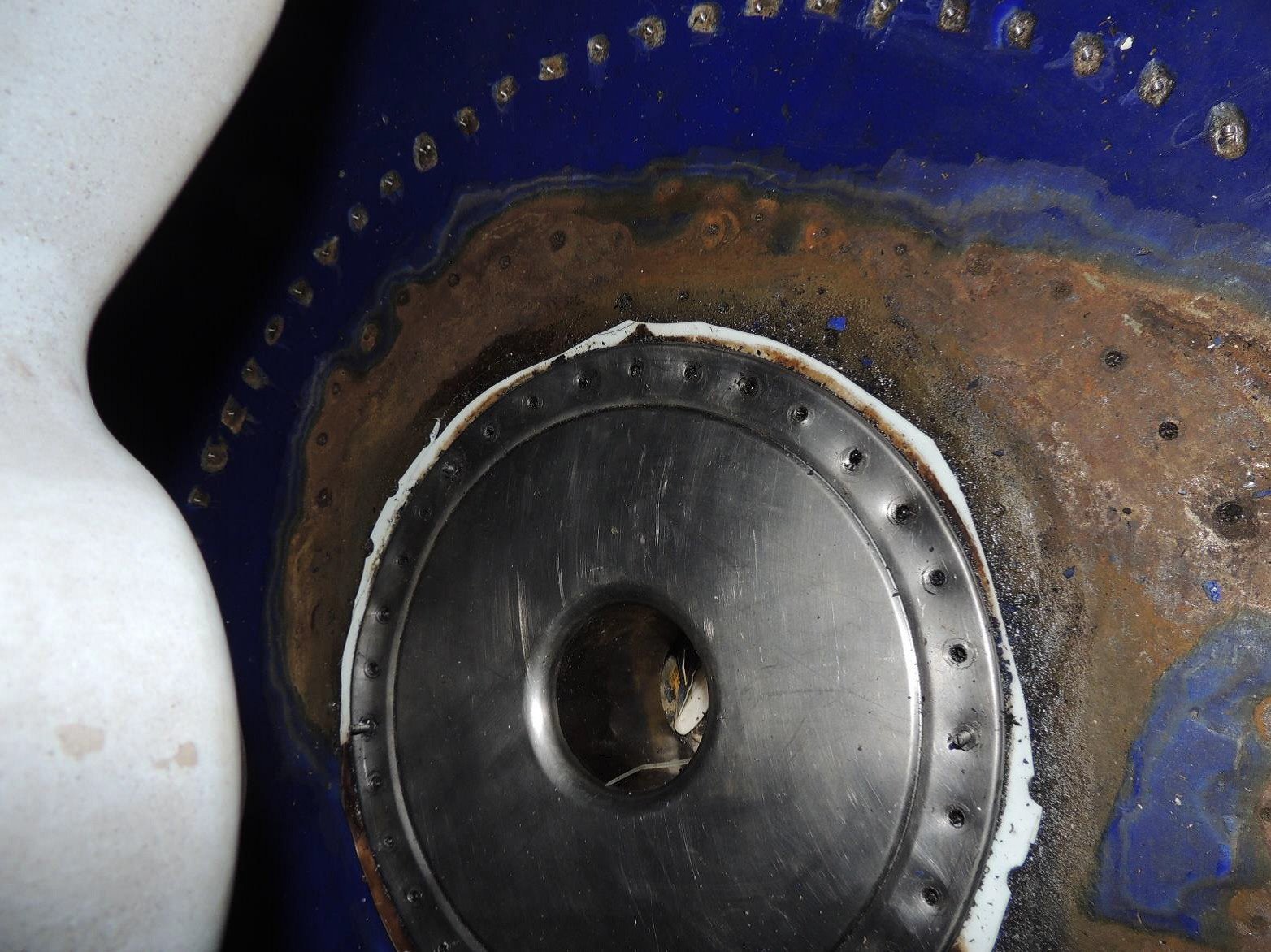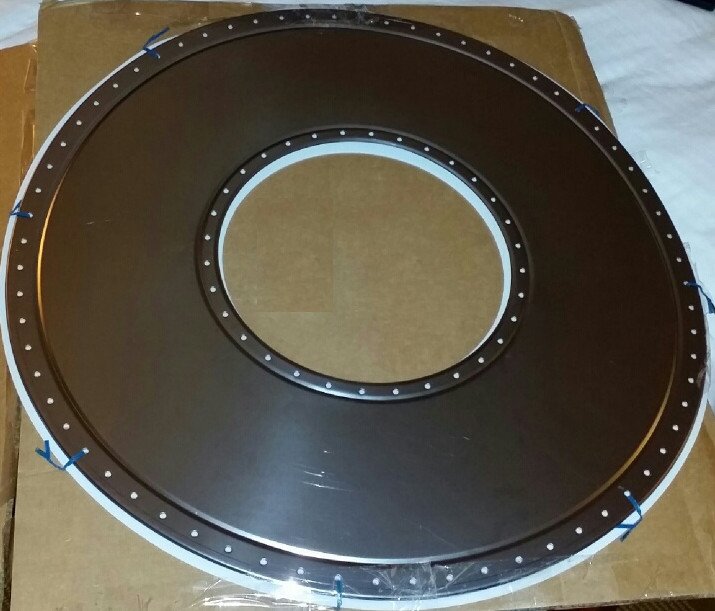Large Repairs for Glass Lined Equipment
As is often the case with a damaged vessel, replacement is not an option when running a campaign. A solution is necessary to operate the vessel until a shutdown can be scheduled. GTI is sensitive to down time. Our focus has always been to find solutions to return your vessel to production.
In this case study a 4000 gallon reactor exhibited extensive damage as glass failed as a result of contaminated steel. The plant was not prepared for an unscheduled outage to replace a 4000 gallon reactor.
The vessel must remain in service until shutdown fall 2015.This 4000 reactor had been repaired with a sleeve to fit a 4" nozzle with an outside diameter of 14". During the 4Q 2014 inspection weak areas in the glass were noted. Several options were developed with cost basis and probability for success to extend the operating life of the vessel until the scheduled plant outage.. The options included; remove all repairs to install a large sleeve, replace bottom head patches, measure design, and fabricate a tantalum donut patch, or replace the reactor immediately. Another inspection was scheduled for 1st qtr 2015.
During the 1Q 2015 inspection additional damage had propagated beyond the perimeter of the repairs. We reviewed reactor repair options and repair schedules.
The existing sleeve remained sealed.
Use existing OD Stud holes on the sleeve as ID holes on the new repair to provide rigidity to the final repair.
Cover all existing damage.
Provide a repair to extend operational life.
Figure 3. All patches removed with the exception of the sleeve.
Figure 4. Fabricated repair.
This repair is 28 1/2" OD vs the vessel manway at 24" thus the tantalum required reforming in the vessel prior to installation.
Figure 5. New repair patch installed.
The "donut patch" was installed using existing holes in the nozzle sleeve. The Repair ID was sealed and verified with .002" shims. The perimeter holes are drilled perpendicular to the surface of the glass. All threads are sealed.
Repair options for glass lined steel must be selected based on operating parameters of the equipment;
Temperature
Pressure
Chemistry
Damage location
Galvanic action
Agitation
Repair materials
Technician Experience
As the temperature and pressure increase chemical solutions may become more aggressive. Permeation rates increase at higher pressure and temperature. Agitation in process vessels can accelerate failure Dissimilar metals in a low pH environment can lead to galvanic action with the tantalum becoming embrittled. All repairs in glass lined equipment are considered temporary with the exception of the application of a bonded glass. The life of any repair is dependent upon process parameters, location, and most critically expertise of the technician.






